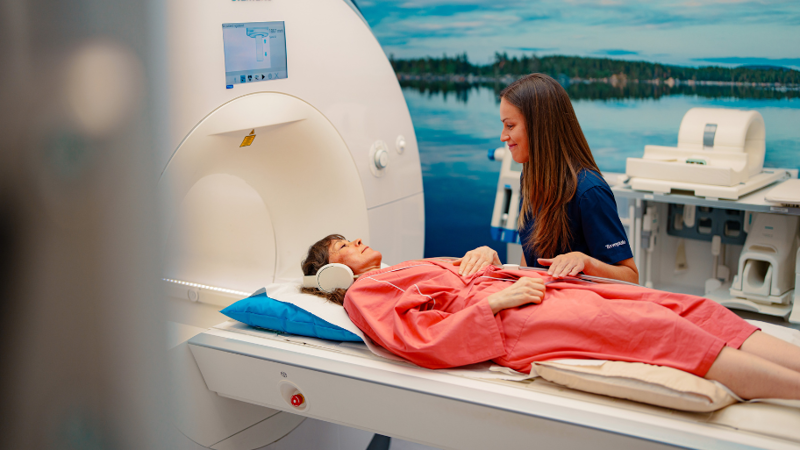Such misconceptions are still associated with massage
Marcus Frangén of Terveystalo Rela massage therapists explains how the understanding of the physiological effects of massage has changed and what misconceptions are persistently associated with massage.

1. Massage does not remove waste
Our bodies remove waste in many different ways - including through sweating and urine. A persistent misconception is that traditional massage also removes waste products from the body.
- Massage does increase local circulation, but it does not actually remove waste products. However, there is some evidence that lymphatic massage could stimulate fluid removal and reduce swelling. Lymphatic massage is a gentle and relaxing massage that is done by following the lymphatic system," explains Marcus Frangén of Rela massage therapists at Terveystalo.
2. The beneficial effects of massage are based on nervous system reactions
The beneficial effects of massage are based on nervous system reactions and do not require hard muscular manipulation to produce them.
- Many people associate pain with the fact that massage is effective. And then you persevere, not daring to tell the masseuse that it hurts. But current knowledge shows that the good effects of massage are based on a neural response and are achieved much more gently than by inflicting hard pain," says Frangén.
3. Too vigorous massage can even cause micro-damage
Too vigorous massage can even cause a small local inflammation of the muscle.
- Causing such micro-damage was once thought to be only good for you. It was believed that once the body had corrected the small local inflammation caused by massage, it would be more intact. In fact, all that was achieved was very sore muscles for the next few days.
4. There is a sweet pain that indicates a release of muscle tension
So massage should never hurt too much. But there is pain that also signals good things.
- We massage therapists call this sweet pain. It's a kind of light, good-feeling pain in the muscles when you massage them. Sweet pain signals that muscle tension is starting to relax," Frangén explains.
5. Massage should increasingly be used as a remedy for stress and insomnia
Massage not only relieves muscle tension, but its mind-calming effects are also better known.
- Massage affects the nerve endings in the skin that carry messages to the central nervous system. This is what is meant by the neurological effects of massage. The activity of the sympathetic nervous system is reduced and that of the parasympathetic nervous system is increased.
In practice, this means that the secretion of stress hormones is reduced and pleasure hormones are increased.
- The heart rate calms down, blood pressure decreases and the mind becomes quieter. Many people report that they also sleep well after a massage. Maybe you could make a habit of massaging your spouse's shoulders before bed," concludes Frangén.
Read more occupational health articles

Terveystalo's digital services have been awarded the internationally recognized ISO27001 information security certification.
Terveystalo's information security practices, processes, and risk management are in line with international best practices.

Does massage help relieve stress? – Touch restores and calms the body and mind
Stress is not always visible on the outside, but the body does show signs when the strain increases. According to Lassi Ylönen, a trained massage therapist at Terveystalo Rela, the body often communicates stress through subtle signs.

Circular economy and artificial intelligence boost performance and improve care
At the heart of sustainable healthcare, technology serves as a tool for improving both the quality of care and accountability. Terveystalo favors solutions that combine sustainability, cost-effectiveness, and medical expertise.

Psychologist: How to make Christmas a relaxed and personal celebration
For many, the anticipation of Christmas begins when cities are decked out in seasonal lights and the first chocolates, calendars, and gingerbread cookies appear on store shelves. Christmas carols ring out and the Tonttuparaati choir sings “Kiire jo on! Kiire jo on!” (Hurry up! Hurry up!). This warm and atmospheric celebration also brings other feelings to mind: how on earth can we get through all this without losing our joy and peace in the rush?

Terveystalo and Gosta Labs deepen their cooperation: the goal is to streamline work with a superior patient information system
Terveystalo is deepening its cooperation with Finnish health technology company Gosta Labs and investing €1 million in the company as a minority investor. The aim is to jointly develop artificial intelligence solutions that improve the quality of care and the efficiency of reception work as part of Terveystalo's new patient information system, Terveystalo Ella.

First aid preparedness in companies requires action and courage
First aid skills increase resilience, but a barometer survey of Finnish organizations' first aid capabilities published in October reveals that the number of trained personnel is alarmingly low.